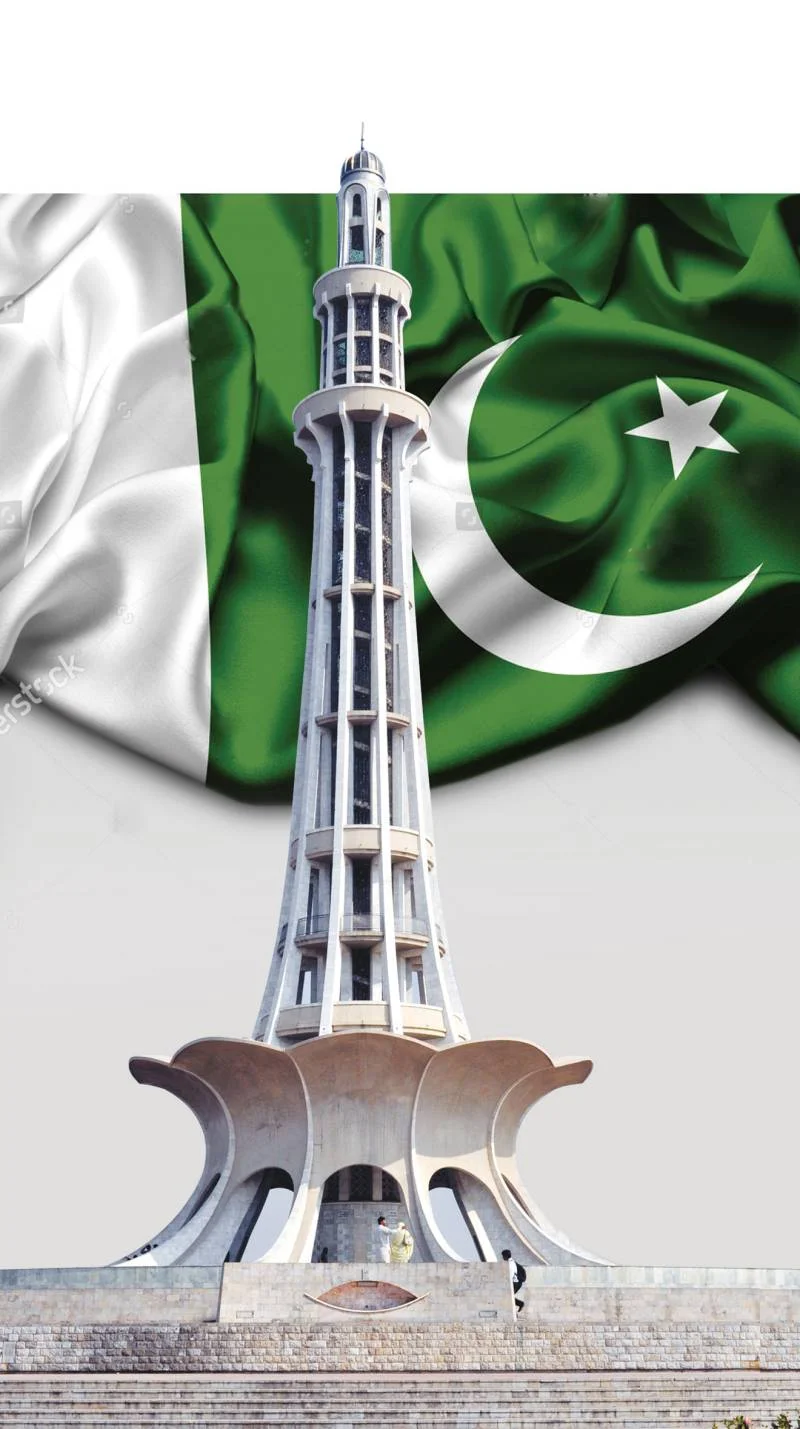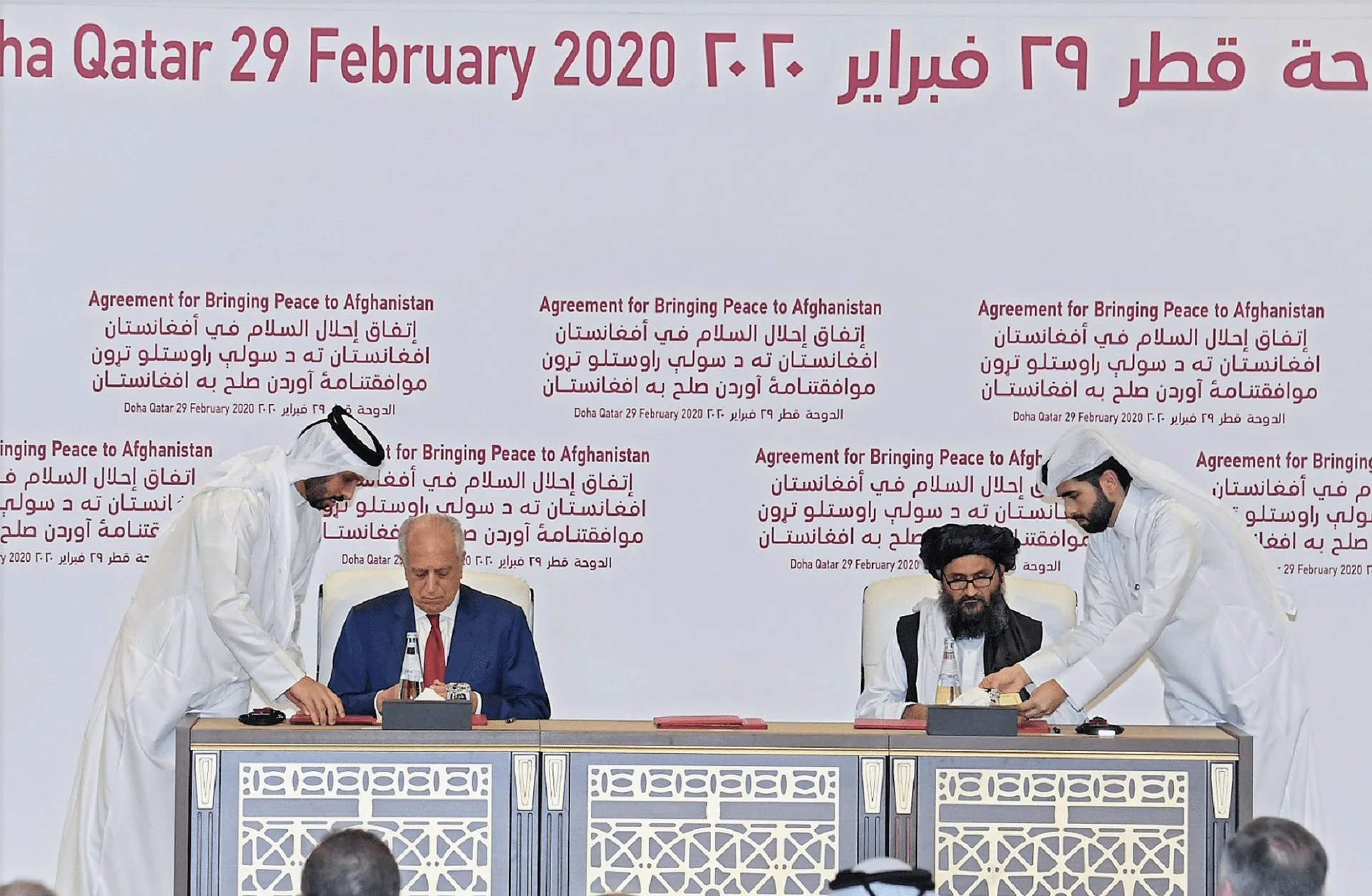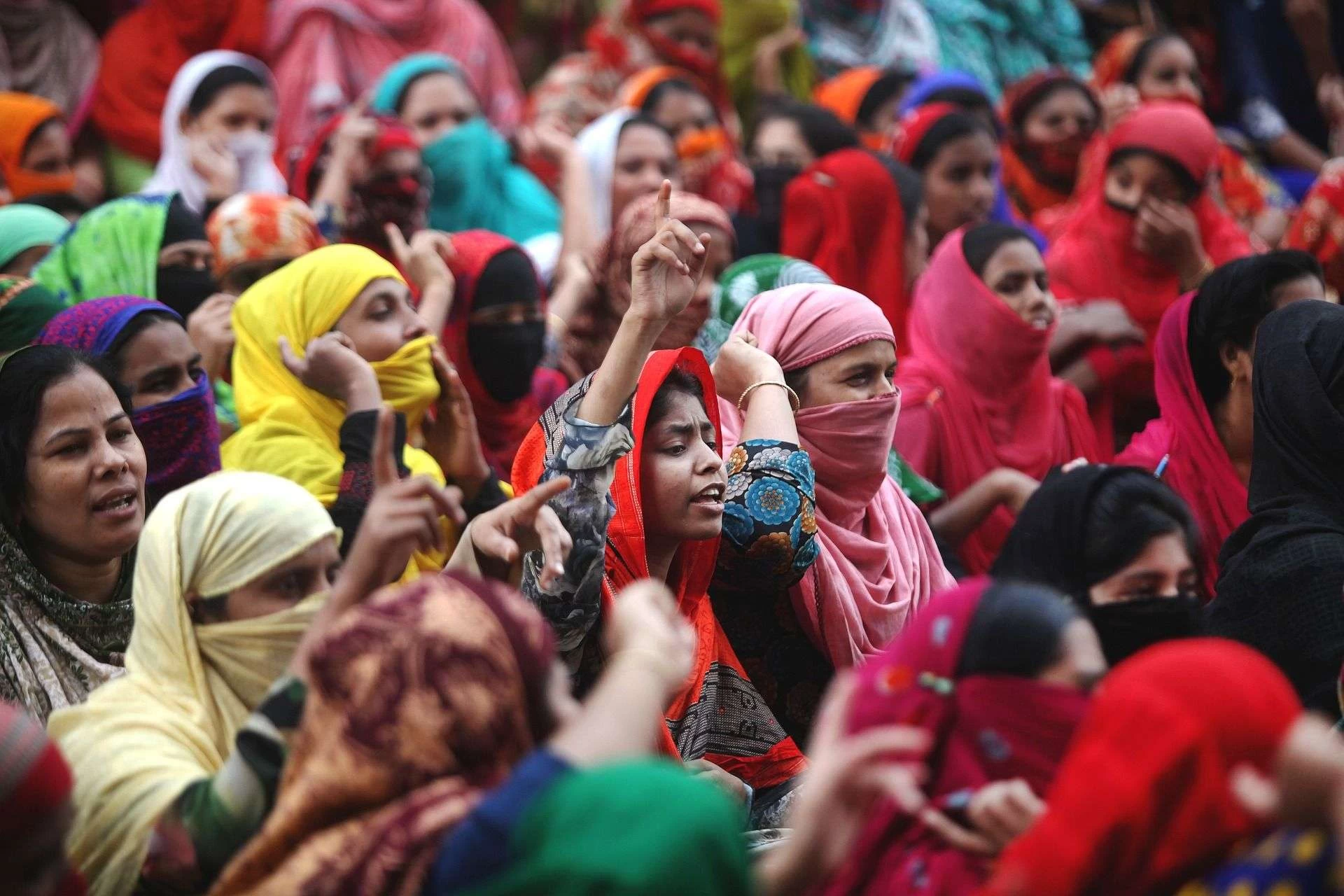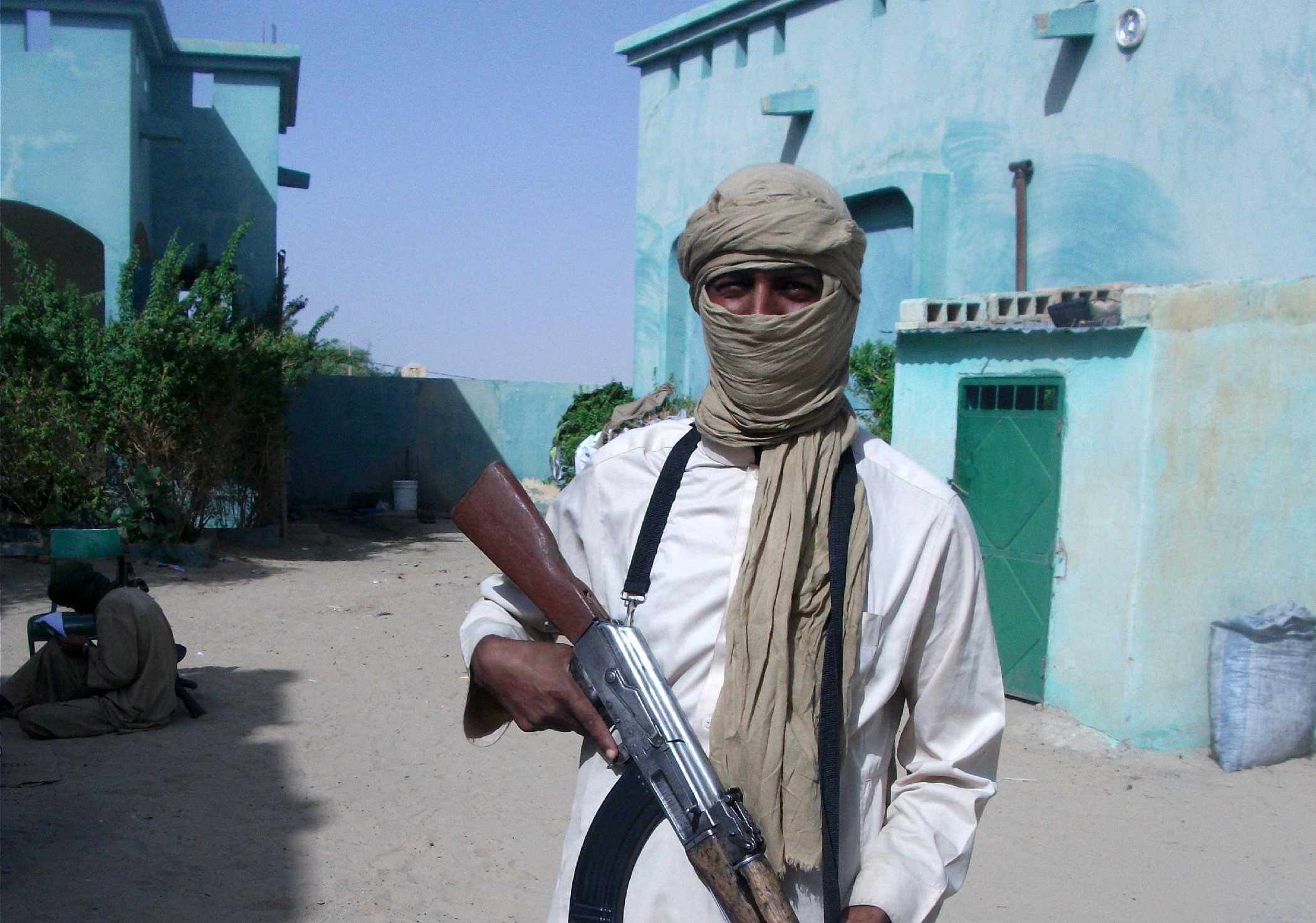In the story of Pakistan, March 23rd is a day of particular significance. Like all tales of arduous struggle and eventual triumph, where the journey of the central characters through the resolution of the conflict is as substantial as the resolution itself, the 23rd signifies the difficulty of the road but the readiness to take it. The date marks not one but two significant milestones. On this day in 1940, the Muslim League adopted the Lahore Resolution, which advocated for the creation of an independent sovereign state from the British Indian provinces with a Muslim majority in the northwest and east. Sixteen years later, on March 23, 1956, the Dominion of Pakistan became the Islamic Republic of Pakistan when the country’s first constitution was adopted, making it the first Islamic republic in history. Decades later, the country marks “Pakistan Day” with great pomp and circumstance, and a brand of Pakistani nationalism that is defined by an amalgamation of many dreams and delusions.
Pakistan: Nationalism and Identity
Notwithstanding the prevailing nationalism and identity fancies during the past roughly seven decades, there appeared to be little to no uncertainty about the way forward at the time of the Lahore Resolution’s pronouncement eighty-three years ago.
According to Stanley Wolpert, Jinnah’s address at Lahore effectively ended the possibility of a single, independent India. “Once his mind was made up,” Wolpert wrote, “he never reverted to any earlier position… The ambassador of Hindu-Muslim unity had totally transformed himself into Pakistan’s great leader. All that remained was for his party first, then his inchoate nation, and then his British allies to agree to the formula he had resolved upon.”
It is worth noting that although Islam had reached the Indian subcontinent in the seventh century, taking root when the Arabs conquered Sindh and later spreading to Punjab and North India in the 12th century through the conquest of the Ghaznavids and Ghurids, the Muslims didn’t begin to perceive themselves as a distinct nation until much later. In line with conceptions of a nation, the Muslims also evolved over time to acknowledge their own autonomy, unity, and unique interests as a multiethnic, sociopolitical, and cultural community of people having a more or less defined territory and right to sovereignty. It is asserted that the Aligarh Movement was essentially where it all began, despite the fact that its realization gained momentum with the passage of the Lahore Resolution.
Early in the 19th century, the introduction and teaching of Western languages, history, and philosophy underwent dramatic shifts as a result of Lord Macaulay’s educational reforms. In 1835, English replaced Persian as the official language, replacing the latter as the medium of instruction. This development came at the expense of individuals who had based their careers on the latter language. The British Crown stopped funding traditional Hindu and Islamic education, and nearly every madrasah lost its financial endowment. This meant that a relatively small percentage of Muslim families preferred to send their children to English-medium institutions. The Hindu population, on the other hand, benefited from the influence of the Bengali Renaissance, which elevated them educationally and enabled them to gain entrance to lucrative jobs in the Indian Civil Service. Several of them went on to hold key positions in the British government. Due to the consequent socioeconomic status disparity between Hindus and Muslims, the possibility of the latter community being marginalized, particularly in terms of political independence, was heightened.
In 1886, Sir Syed Ahmed Khan established the Muhammadan Educational Conference, but a self-imposed ban barred it from engaging in political discourse. Its initial objective was to promote British education, particularly in the fields of science and literature, among Muslims in India. The conference inspired the Muslim upper class to advocate an expansion of educational uplift elsewhere, which became known as the Aligarh Movement, in addition to raising funds for Sir Syed’s Aligarh Muslim University. This greater comprehension of Muslim interests in turn aided in raising elite Muslims’ political consciousness. By 1901, it was considered vital to establish a Muslim political party on a national level. Subsequently, in 1906, several years after Sir Syed’s passing, the All-India Muslim League was formed.
Following World War I, Muslim and Hindu leaders showed some political cooperation, exemplified by the Khilafat Movement. Nonetheless, at the campaign’s conclusion in 1922, relations deteriorated rapidly. The two communities were driven apart by the rapid growth of communalism. Violent riots broke out in various places, with 91 occurring in the state of Uttar Pradesh alone between 1923 and 1927. Notably, Muslims made up less than 4% of Congress party delegates at the leadership level in 1923, down significantly from 11% in 1921.
The initial call for a separate Muslim state in India was made in 1930 by Sir Muhammad Iqbal. During this time, Muslims were starting to embrace the “Two-Nation Theory,” which argues that Hindus and Muslims in India are two separate communities that cannot coexist in one state without oppressing and discriminating against one another or indulging in continual strife. Despite the two-state solution being rejected by Congress leaders, the League’s political platform incorporated Iqbal’s vision to unify the North-West Frontier Province, Balochistan, Punjab, and Sindh into one state with a majority Muslim population. The Muslim League continued to be an organization for affluent Indian Muslims up until 1937. But after extensive mobilization by the Muslim League leadership, especially in the wake of the Lahore Resolution, the party gained popularity among the Muslim masses in the 1940s.
In a piece published in the London Weekly Time & Tide on March 9, 1940, Jinnah more eloquently articulated the idea of separation. He claimed that all of India’s constitutional problems stemmed from the fact that democratic systems founded on the concept of homogenous nations, like England, were categorically inapplicable to heterogeneous nations, like India. He went on to state, “If, therefore, it is accepted that there is in India a major and a minor nation, it follows that a parliamentary system based on the majority principle must inevitably mean the rule of the major nation. Experience has proved that, whatever the economic and political program of any political party, the Hindu, as a general rule, will vote for his caste-fellow, the Muslim for his coreligionist.”
Partition 1947: The British Departure
The ultimate partition of India in 1947 along religious lines was unquestionably one of the most pivotal moments in South Asia’s modern history. It precipitated the dissolution of the British Raj in South Asia and the establishment of two independent dominions: India and Pakistan. It also caused a change in political boundaries and the division of other resources. The Dominion of Pakistan, which at the time consisted of two wings bordering India on either side, is now the Islamic Republic of Pakistan and the People’s Republic of Bangladesh. Whereas, the Dominion of India is now known as the Republic of India. Among the notable changes to political boundaries was the partitioning of Bengal and Punjab, two British Indian provinces, wherein Pakistan received the majority-Muslim districts and India received the majority-Non-Muslim districts.
In addition to being remembered today in these countries as the moment that signified their deliverance from British rule, the partition conjures recollections of a tremendous loss of life and an extraordinary migration between the two new dominions.
These migrations happened abruptly and with little forewarning. It was not anticipated that the partitioning would necessitate a population exchange. The expectation was for religious minorities to remain in the states where they were present. In 1947, there were about 390 million people living in undivided India. After the partition, there were an estimated 330 million people living in India, 30 million in West Pakistan, and 30 million in East Pakistan (now Bangladesh). Over 14.5 million people crossed the borders after the borders were drawn, seeking what they believed to be the relative protection of the religious majority. While between 14 million and 18 million people are estimated to have relocated, at least a million people are thought to have died during the time of the partition. It is not difficult to imagine, therefore, that the surviving refugees may have thought it wiser to seek refuge among those of the same religion.
In the 75 years that have elapsed since, several regional and international scholarly perspectives have been put forward on the scale of the partition, its impact on the inhabitants of the now-three independent countries, and the extent to which the event or the ensuing tragedy could have been avoided. In addition, analysts have also attempted to investigate the occurrence and synchronous transformation that the establishment of India and Pakistan as postcolonial states in August 1947 represented and brought about. Perhaps among the most unsettling and critical components of the discourse on partition and independence is that the final decision on the demarcation of state boundaries was made after the date of the ‘transfer of power’. In addition to being charged with rushing through the process, Lord Mountbatten of Burma is also accused of tilting the Radcliffe Line to India’s advantage. The commission’s decision on the final border took more time to determine than the partition itself. Some detractors claim that British haste caused the division to be more brutal than it should have been. Independence was proclaimed before the actual division; therefore, it was up to the new governments of the newly formed states of India and Pakistan to ensure continued order.
Many contend, however, that realities on the ground compelled the British to hasten the division. Shortly after assuming office, Mountbatten realized there was no other option except partition and a prompt withdrawal from India if Britain were to avoid becoming involved in a civil war, which appeared to be becoming increasingly imminent. Before the partition, there had been several instances of lawlessness and considerable carnage on both sides. By the time Mountbatten was appointed Viceroy, a violent civil war was brewing. Britain, whose resources had depleted after World War II, saw little choice but to flee in 1947, for the alternative appeared to be enmeshed in a civil war that may be violent and from which it would be challenging to escape.
There is little doubt that the violent nature of the partition fostered a climate of enmity and mistrust between India and Pakistan that continues to influence their relationship today. The territorial dispute over the Kashmir region, which has resulted in three wars between India and Pakistan as well as several other military clashes, is one of its enduring legacies. For some, this backdrop has prompted retrospective speculation on whether or not the partition sealed the fate of the so-called British ‘divide and rule policy’ or, indeed, if it was the inevitable end of Hindu-Muslim differences. Nonetheless, it is evident—in contrast with utopian delusions—that a geographically united, socially harmonious Indian subcontinent would have been difficult to achieve even without the events of 1947.
Independence: Being Pakistani
In the grandiose imaginations of nationalists, Pakistan is frequently heralded as the successor state to the Islamic empires and kingdoms that collectively ruled ancient India for almost a millennium. To a considerable degree, the attainment of Pakistan, which was based on an Islamic ideology, was able to forge between an otherwise diverse population an Islamic affinity that spanned the political, economic, and social realms of existence. However, it is a fact unanimously acknowledged in the country that Jinnah’s vision of Pakistan as a state and the form it eventually took are in stark contrast with each other. The resulting identity crisis and persisting uncertainty is illustrated by recurring debates about the state structure decades after the country’s conception and independence.
Two diametrically opposed identity ideologies, each espoused by two rival forces, have been and still are the bedrock of Pakistan’s national rhetoric.
Despite the multiethnic and increasingly polarized nature of the society, there are forces that have sought to forge a homogenous society and a uniform national identity, utilizing Islam as a unifying principle for a centrally organized Muslim nation-state. On the other hand, there are forces that are made up of representatives of various ethnic, linguistic, cultural, and regional subgroups and have been resisting the officially supported nation- and state-building project and purportedly making demands for increased constitutional recognition of the multiethnic nature of the polity and their accommodation in a multinational framework within a decentralized federal order. These divergent perspectives have not only affected the national dialogue but also the structural development of all constitutional instruments. In addition, Islam has been reduced to a potent tool in politicians’ hands during a period of uncertainty and confusion regarding the purpose and direction the nation-state had intended to take, while feudalism and economic inequality have undermined the liberal political system that the elites had desired to create.
As a consequence of conflicting visions of statehood, vested interests of the elite, and sheer misjudgments in governance, Pakistan’s brief history as a nation has been exceedingly volatile. In the past seven decades, the country has struggled to achieve lasting stability due to conflicts within its territory and challenges posed by a largely hostile neighborhood. Furthermore, it has alternated between military regimes and a veneer of democratically elected governments and served as a frontline state during the Cold War and the War in Afghanistan. The current state of affairs is one of increasing antagonism and public agitation caused by political turmoil, the collapse of the economy, and the scourge of terrorism. Hence, the challenge Pakistan faces in balancing the need for national integration with the demands of national security is rooted in all of its difficulties.
Pushed to the brink, the desperation is evident in the national propensity to alternate between grand illusions of a sociopolitical future bereft of realistic goals and paralyzing defeatism that essentially amounts to psychological capitulation. Regardless of how challenging it may seem, it is imperative, most of all on this day, to draw inspiration from the laborious struggle and sacrifice that culminated in the establishment of Pakistan as a distinct nation and remember—that with persistent coordination between vision and action, no goal is entirely impossible to accomplish.







